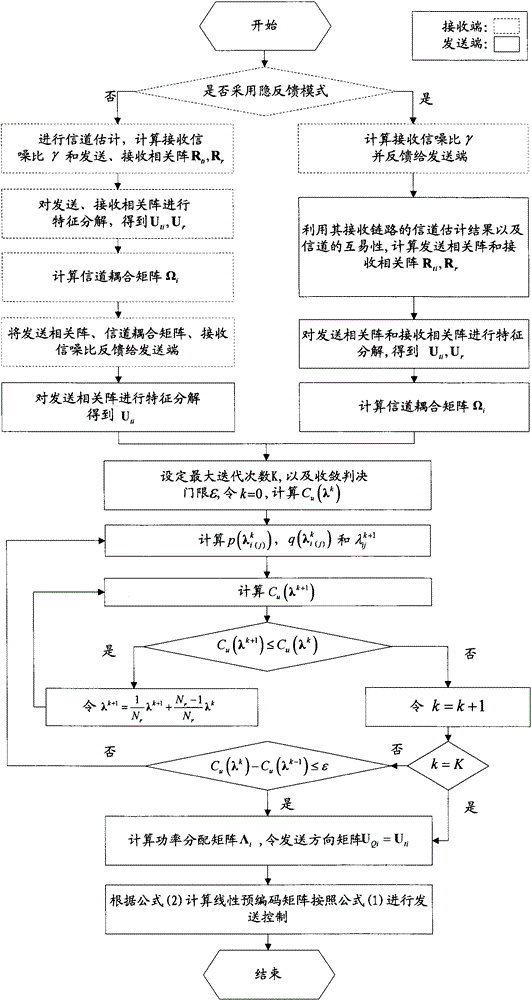Self-adaption transmission method utilizing channel statistical information in multi-base station cooperative transmission system
A technology of adaptive transmission and channel statistics, applied in transmission systems, digital transmission systems, baseband system components, etc., can solve problems such as difficulty in obtaining channel state information at the sending end, time-varying frequency offset of wireless channels, etc.
- Summary
- Abstract
- Description
- Claims
- Application Information
AI Technical Summary
Problems solved by technology
Method used
Image
Examples
specific Embodiment approach
[0078] Receiving end:
[0079] 1) If the implicit feedback mode is adopted, calculate the received signal-to-noise ratio γ, feed back the received signal-to-noise ratio γ to each base station at the transmitting end, and skip to step 6); otherwise, proceed to step 2).
[0080] 2), use the received signal to perform channel estimation, calculate the received signal-to-noise ratio γ, and use formula (4) and formula (5) to calculate the transmit correlation matrix R ti (i=1, 2,..., m) and receiving correlation matrix R r .
[0081] 3), perform eigendecomposition on the sending correlation matrix and the receiving correlation matrix to obtain U ti (i=1, 2, ..., m) and U r .
[0082] 4), using the result of eigendecomposition U ti (i=1, 2, ..., m), U r and formula (8) to calculate the channel coupling matrix Ω i (i=1, 2, . . . , m).
[0083] 5), the R ti ,Ω i (i=1, 2, . . . , m) and γ are fed back to each base station at the sending end, and enter step 9). Each base stat...
PUM
 Login to View More
Login to View More Abstract
Description
Claims
Application Information
 Login to View More
Login to View More - R&D
- Intellectual Property
- Life Sciences
- Materials
- Tech Scout
- Unparalleled Data Quality
- Higher Quality Content
- 60% Fewer Hallucinations
Browse by: Latest US Patents, China's latest patents, Technical Efficacy Thesaurus, Application Domain, Technology Topic, Popular Technical Reports.
© 2025 PatSnap. All rights reserved.Legal|Privacy policy|Modern Slavery Act Transparency Statement|Sitemap|About US| Contact US: help@patsnap.com



